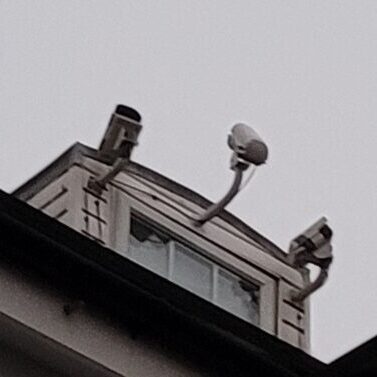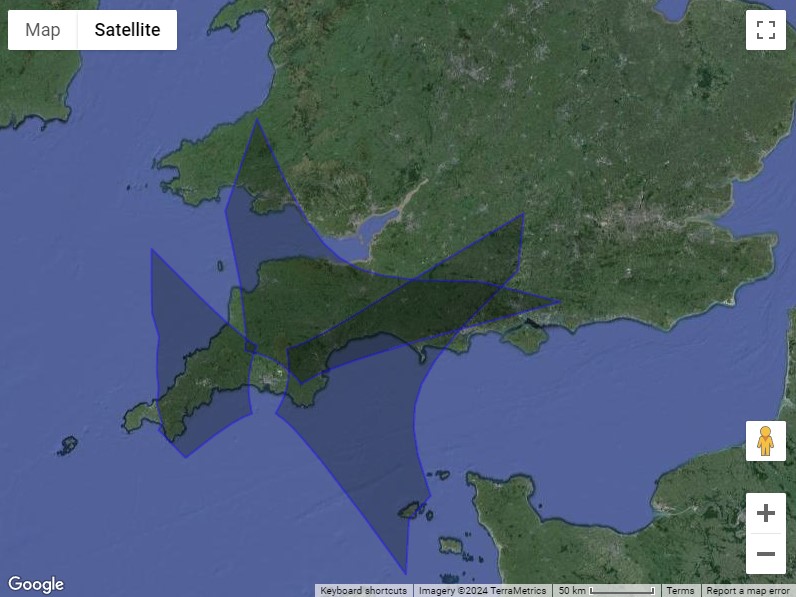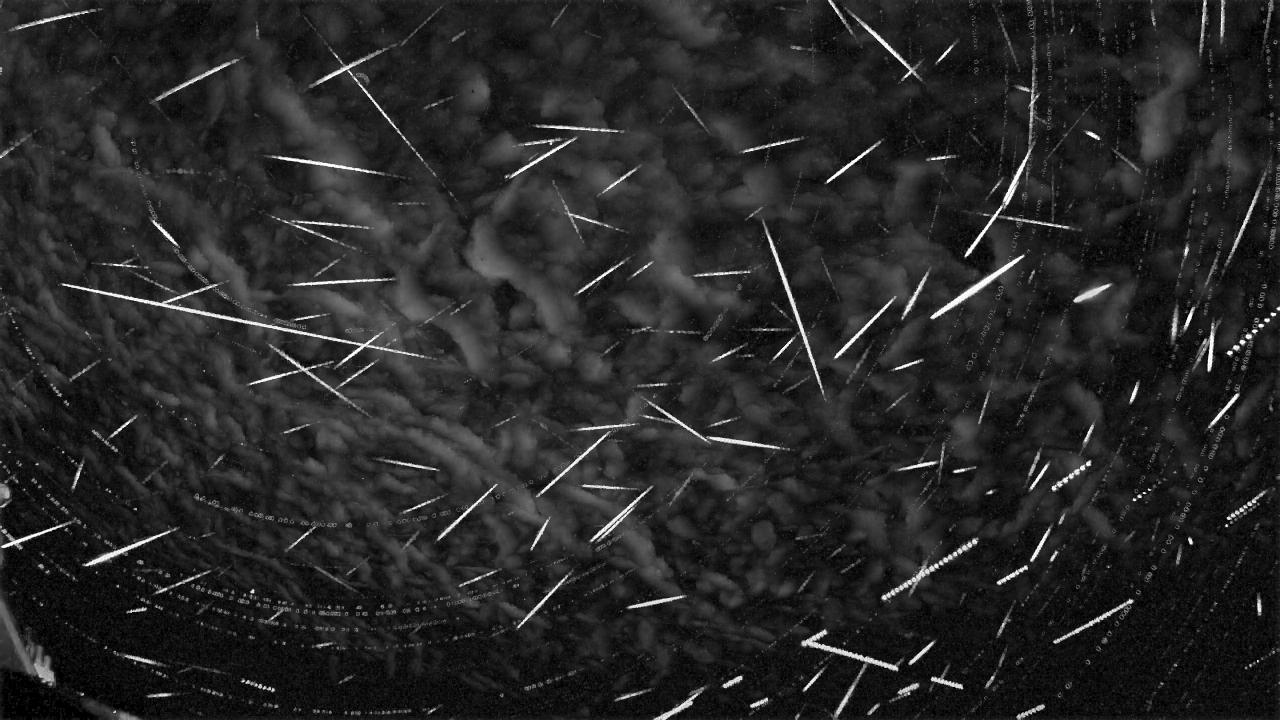
I have three meteor cameras attached to the dormer window at the top of my house. All three cameras are orientated in different directions, with the aim of covering as much of the UK mainland as possible.
- UK008Q is the first camera I installed and it is orientated to look to the east / south-east of Plymouth.
- UK009S is the second camera I installed and it is orientated to look to the north / north-east of Plymouth.
- UK00BB is the third camera I installed and it is orientated to look to the west of Plymouth.
The maps below show the areas my cameras cover at altitudes of 25km, 75km and 100km.

25km
75km
100km
All three cameras feed the data they collect into the Global Meteor Network (GMN). The GMN is a world wide organization of amateur and professional astronomers alike, utilizes highly sensitive low-cost CMOS video cameras which run open-source meteor detection software on Raspberry Pi computers. The main goal of the network is to provide long-term characterization of the radiants, flux, and size distribution of annual meteor showers and outbursts in the optical meteor mass range. More information about the network and how it operates can be found here.
You can check the status of my cameras and access archive date from them, along with all the other meteor cameras in the network, in the GMN camera status page for United Kingdom of Great Britain and Northern Ireland. Alternatively, you can use this interactive map showing all meteor detections from the GMN from the 9th December 2018 up to the present day.
If you are interested in building your own camera and joining the GMN, then you can find instructions on how to do so here. The UK branch of the GMN, of which I am a small part, is the UK Meteor Network with 256 cameras spread across the UK (see map below – UK Meteor Data Achieve).

Data reports from all the UK meteor cameras can be found here, with data specific to my cameras in Plymouth here.
Meteor camera UK008Q

Last night’s results from this camera can be found here, with the full archive here.
Below are some highlight images from this camera.







Meteor camera UK009S

Last night’s results from this camera can be found here, with the full archive here.
Below are some highlight images from this camera.









Meteor Camera UK00BB

Last night’s results for this camera can be found here, with the full archive here.
Below are some highlight images from this camera.






And finally…
What else has my meteor cameras captured on film other than meteors?

On the night of the 18th September 2023 my UK009S camera caught three flashes of sprite lightning, which is a rare type of electric discharge that occur in the mesosphere, high above thunderstorm clouds.
There is a citizen science project called Spritacular where people can contribute to a research project looking into this rare form of lightning. If you capture an image of sprite lightning on your meteor camera, like this one, or similar ones captured on a digital camera or on a webcam, please consider uploading them, like I did, to the site to help with this research.

This UK009S capture stack from the night of the 25th July 2023 contains meteors (short white streaks), planes (long continuous, or dotted lines), the celestial pole around which star trails rotate (diurnal circles), and what is most likely a bat (wide grey ghostly trail).

This UK009S capture stack from the night of the 17th August 2023 contains what annoys all star gazers – clouds, though I have to admit sometimes they do result in some nice atmospheric capture stacks.

I love this cropped image from UK009S, as it almost looks like the meteor has disappeared down the chimney of my neighbours house….

My first ‘Scottish’ meteor – 18th April 2024
More information on it can be found here.
This is the furthest away from Plymouth any of my cameras, in this case UK009S, have detected a meteor.

